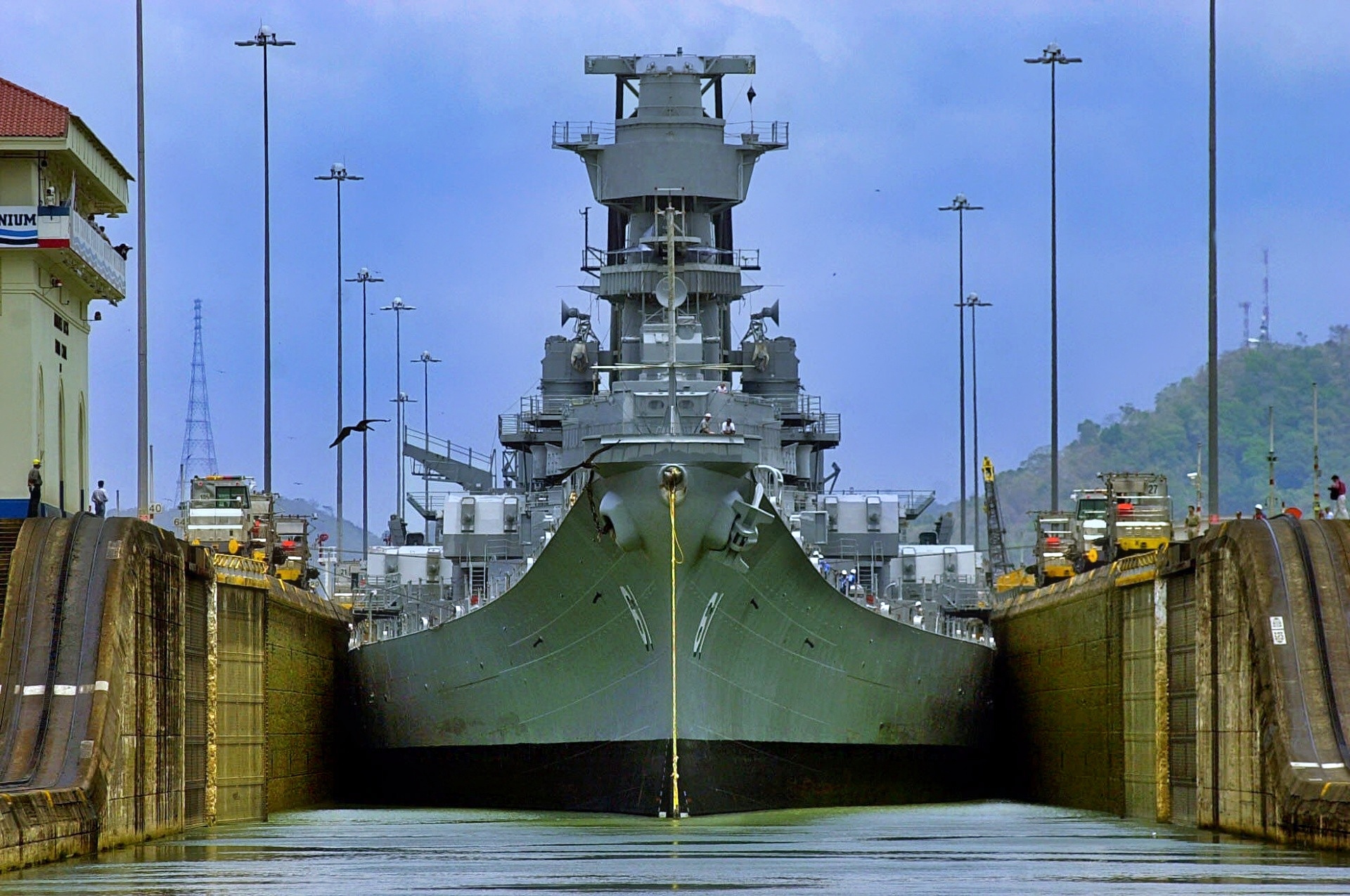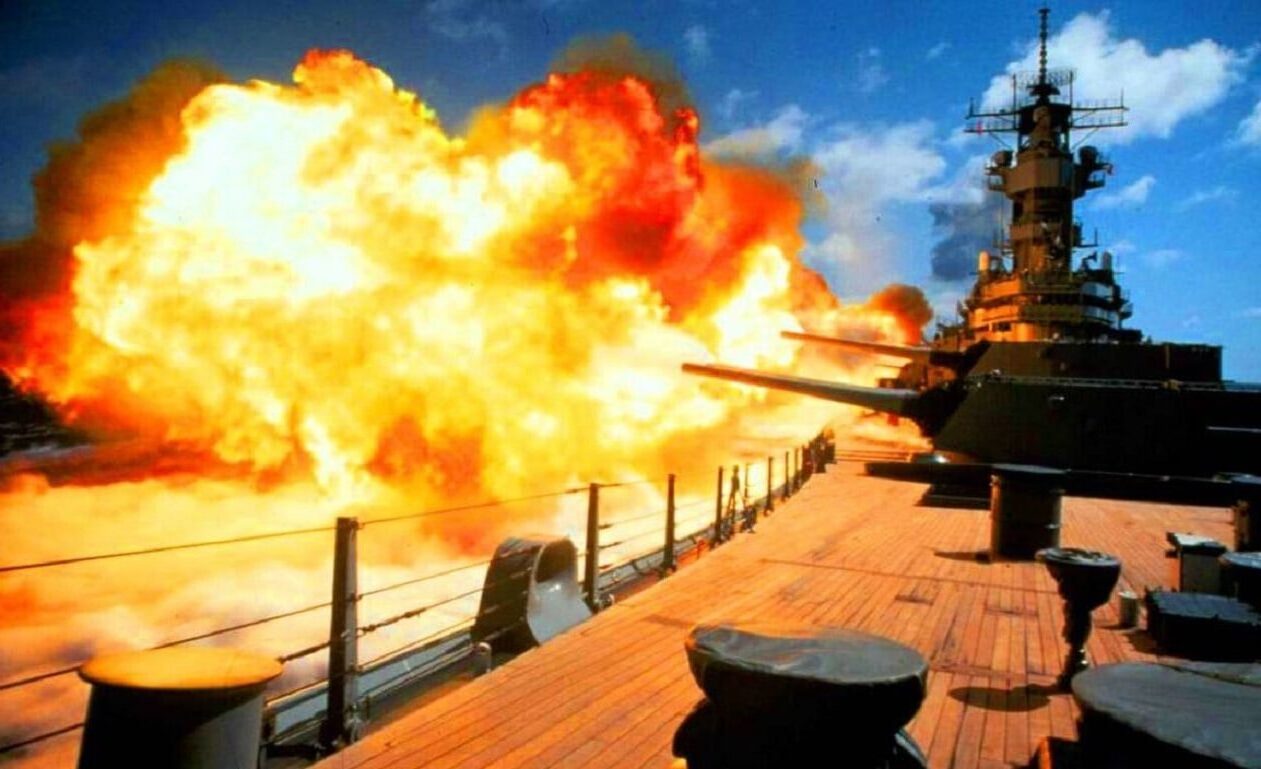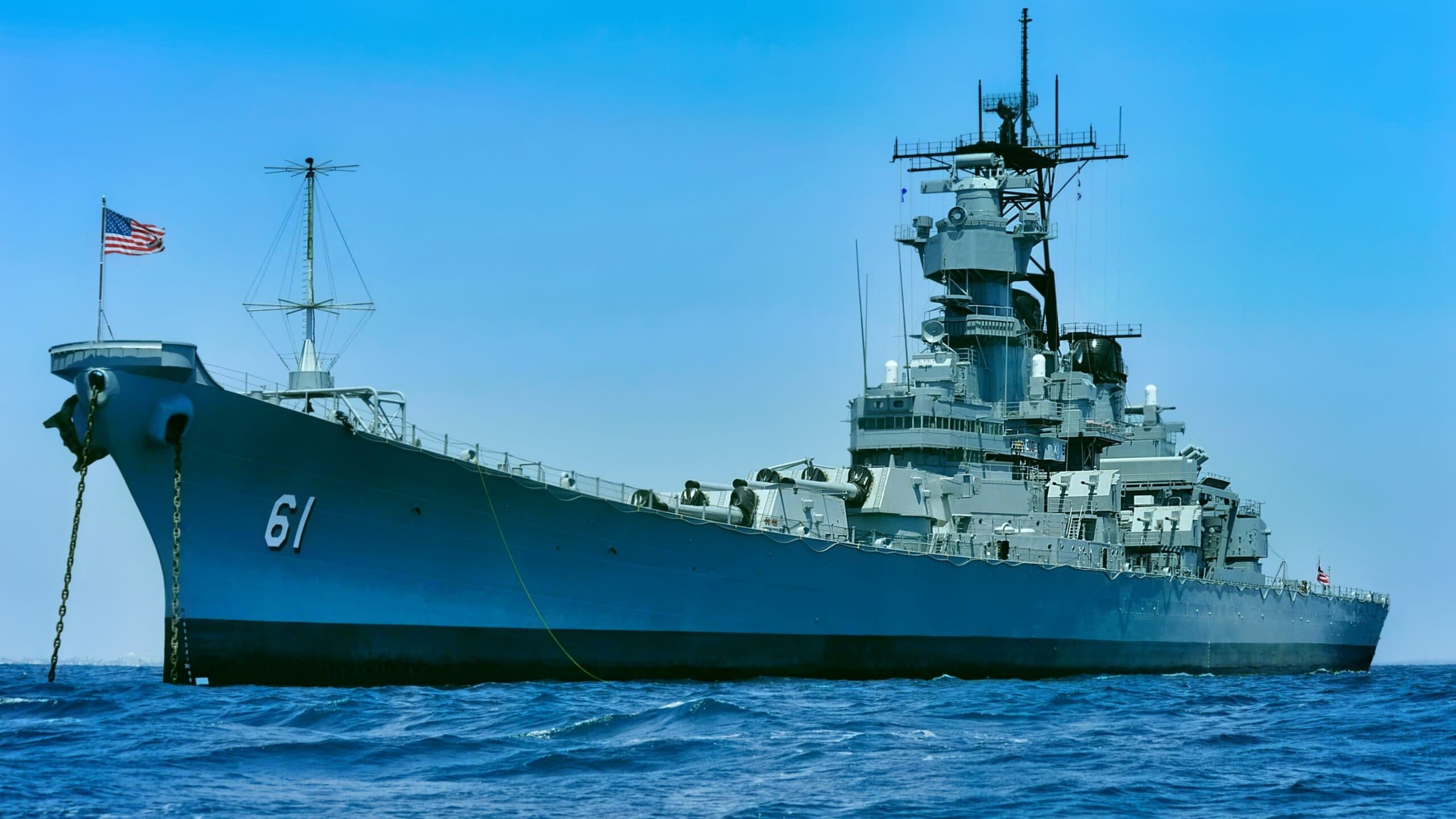Summary and Key Points: The USS Kentucky, intended as the last Iowa-class battleship, was ultimately scrapped in 1958 due to strategic shifts following WWII.
-Initially planned as a Montana-class battleship, wartime experiences, especially the pivotal Battle of Midway, demonstrated the critical role of aircraft carriers over heavily armed battleships.

USS Iowa Battleship. Image Credit: Creative Commons.
-As naval warfare transitioned toward air power, Kentucky’s role diminished, and its construction slowed and stopped entirely in the post-war military drawdown.
-This shift marked a significant transformation in naval strategy, emphasizing carrier strike groups and sea-launched air superiority. Thus, despite its potential, the USS Kentucky became an obsolete casualty of changing naval warfare priorities.
-The World War II-era USS Kentucky was the deadliest large battleship ever that didn’t actually exist because, although it was intended to be the last Iowa-class battleship ever constructed, the ship was ultimately sold for scrap in 1958.
That Clue: Navy Canceled the Iowa-Class Before Finishing the Warships Under Contruction
Given the prominent and successful role the Iowa-class battleships have played throughout maritime warfare history, some might wonder just how this happened. However, the USS Kentucky wound up meeting its eventual demise due to war lessons learned in the Pacific theater during WWII and the end of hostilities.
In a simple sense, looking at timelines, the USS Kentucky could be seen as a casualty of the post-WWII military drawdown.
Other wartime dynamics impacted, delayed, and perhaps ultimately ended the USS Kentucky, as the ship’s fate endured several lingering liminal phases wherein its future remained uncertain. Initially, the USS Kentucky was intended to be the second ship in the Montana-class battleships.
However, its developmental trajectory changed due to war developments in the Pacific.
At the beginning of WWII, the Navy realized it needed faster carrier-escorting battleships such as the Iowa-class, as opposed to the larger and heavier Montana-class, so the USS Kentucky’s hull number BB-66 was reordered and laid down as an Iowa-class battleship.
Aircraft Carriers and the Battle of Midway
Although the USS Kentucky never came to exist as an Iowa-class battleship, in large measure due to the end of the war, its transition from Montana-class to Iowa-class highlights significant lessons within the historical trajectory of Navy warships.
In the WWII Battle of Midway, for example, aircraft carriers proved extremely significant to what became an ultimate victory. As a result, the Navy quickly accelerated its shift from large battleships to aircraft carriers, given the success and importance of ocean-launched air power.
Although Navy carriers date all the way back to 1922 and the arrival of CV-1 USS Langley, carriers became the backbone of the US sea force to a much larger extent during the WWII era.
Large, heavily armed battleships continued to add value as coastal and blue-water attack ships capable of delivering massive suppressive fire and lethal bombardment.
Yet, the US Navy seemed to recognize the importance of ocean-launched air power particularly.
Airplane-mounted attack guns were getting more lethal, and fighter jets were getting faster and more capable. Still, most of all, island-hopping kinds of maritime warfare simply didn’t offer any runway space for air power to operate.
Islands in the Pacific were also subject to the Tyranny of Distance to a large extent, as they were simply very far away from land-based runways and aircraft launch locations.
Therefore, the ability to operate and project air power from the sea became more fully understood during maritime warfare in WWII.
Carrier Strike Group Expands
For this reason, the Navy transitioned its thinking toward a need to build warships capable of escorting, supporting, and protecting carriers; the Montana-class was projected to be even larger and more heavily armed than the Iowa class, yet the Iowa class was determined more optimal for escorting Essex-class carriers.
During these warfare experiences and ship-development determinations, the US Navy’s Carrier Strike Group concept expanded and more fully materialized as projecting air power ultimately became more significant than an ability to fire deck-mounted guns.

Image: Creative Commons.
While both remain important, this period marked a visible shift away from surface-fired guns as a primary method of maritime attack toward the use of sea-launched air power.
This not only extended attack ranges but also introduced new tactical advantages, as it enabled warships to attack and maneuver within a new sphere of operational possibility.
This trend or developmental trajectory was likely further fortified, moving into the Vietnam era and beyond into the 1980s with the advent of a new generation of fighter jet technologies.
About the Author: Kris Osborn
Kris Osborn is the Military Technology Editor of 19FortyFive and President of Warrior Maven – Center for Military Modernization. Osborn previously served at the Pentagon as a highly qualified expert in the Office of the Assistant Secretary of the Army—Acquisition, Logistics & Technology. Osborn has also worked as an anchor and on-air military specialist at national TV networks. He has appeared as a guest military expert on Fox News, MSNBC, The Military Channel, and The History Channel. He also has a Masters Degree in Comparative Literature from Columbia University.

